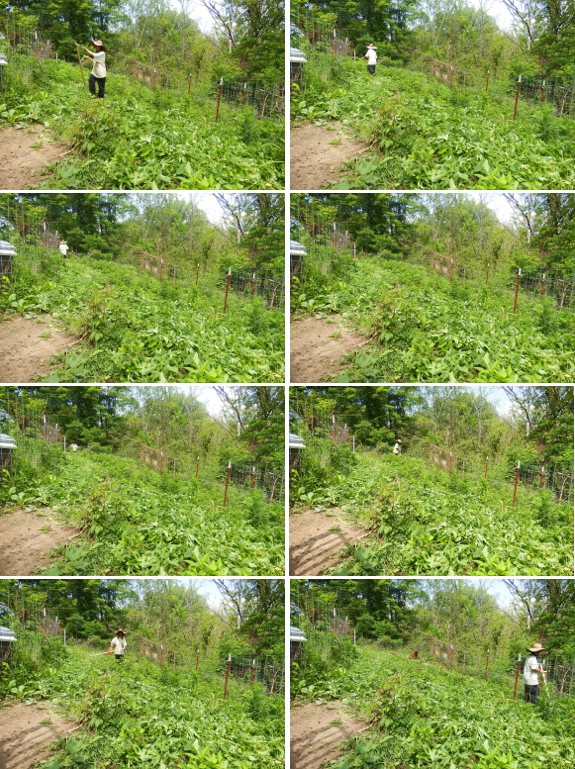
Scything and sickles

Did you ever wonder how long it takes to scythe
a field? The photos above were taken on a 60-second delay as I cut
ragweed growing up in one of our goat pastures. (Yes, our spoiled goats
turn up their noses at ragweed.)
I'm ashamed to admit that I hadn't put my scythe together in years prior to playing around up on the goat pasture Friday. Scything fills a similar niche to weedeating,
and it's always much easier to ask Mark to weedeat than to scythe
myself. But my favorite mechanically-minded husband was visiting his mom
in Ohio this past week, so I opted to do it myself rather than wait.
On a related note, I've
been wondering lately whether a better cutting tool for me wouldn't be a
sickle. I often find myself wanting a handheld cutter that can easily
be used to spot-weed dock coming up in the pasture or harvest clumps of
comfrey for the goats. A bit of research suggests that the top
contenders for that job are Japanese sickles (aka kamas) and European grass hooks. I'd love to hear it if you've had good or bad experiences with either!
Want more in-depth information? Browse through our books.
Or explore more posts by date or by subject.
About us: Anna Hess and Mark Hamilton spent over a decade living self-sufficiently in the mountains of Virginia before moving north to start over from scratch in the foothills of Ohio. They've experimented with permaculture, no-till gardening, trailersteading, home-based microbusinesses and much more, writing about their adventures in both blogs and books.
Want to be notified when new comments are posted on this page? Click on the RSS button after you add a comment to subscribe to the comment feed, or simply check the box beside "email replies to me" while writing your comment.

I've got a sickle that I found in the trash on a bike ride 25 years ago, years before my first house.
I've used it to cut back tall weeds and small willows by the pond behind our house. I like that it is quiet and takes a little skill to use. I can be a little more careful in what I cut instead of just blasting everything with the weedeater. It works well on Canada Thistle and small black locusts as well.
Well sharpened, it is a joy to use.
That sickle with the serrated edges will be hard to sharpen yourself. A non-serrated blade would be much easier in that respect.